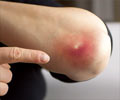
‘Microbiologists suggest that even small levels of antibiotics in the chicken blood can cause bacterial resistance that can sicken people with an infection that is difficult to treat.’
Tweet it Now
Antibiotic resistance can develop in the environment, too, as hospitals and pharmaceutical companies create favorable conditions for resistance by discharging large quantities of medications. But what concentration of antibiotic exposures boost the growth of resistant microbes in the wild? The new study suggests the threshold is low.
The researchers found resistant bacteria thriving in leeches exposed to less than four-hundredths of a milligram, per milliliter, of ciprofloxacin, an important antibiotic, in the environment.
That level represents less than one percent of the "clinical resistance breakpoint," or concentration in the gut that selects for resistance.
For the study, the international team of researchers took a deep dive into the microbiome of blood-sucking medicinal leeches.
Advertisement
Those resistant bacteria, in turn, displaced healthy bacteria.
Advertisement
Also, "it suggests that contamination with very low levels of antibiotics in other environments can lead to the increase in resistant bacteria," said microbiologist Joerg Graf at the University of Connecticut in the US who led the study.
Source-IANS












